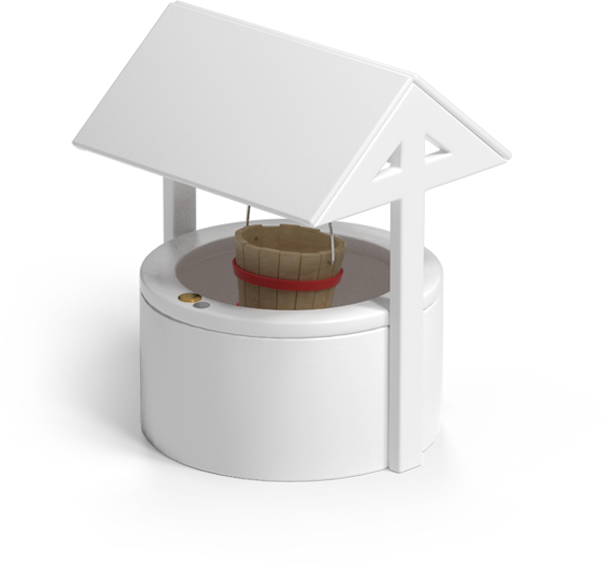How much should I charge for rent
There are many costs involved in being a landlord, after all, it is a business like anything else. And just like the price any business will charge for a product or service is dictated by market forces, so is the amount a landlord should charge for rent of a property.
By Jon Howe4/26/21

How Much Should I Charge For Rent?
There are many costs involved in being a landlord, after all, it is a business like anything else. And just like the price any business will charge for a product or service is dictated by market forces, so is the amount a landlord should charge for rent of a property.
Rental income is vital to a buy-to-let (BTL) landlord. As well as covering your costs it allows you to grow your business and provides the day-to-day cash flow that enables you to expand your portfolio.
But first and foremost rental income is a primary reason for property investment. In addition to the capital growth you hope for in a property’s value, you can expect a regular and stable secondary income from rent, but only if you price the property right.
Essentially, establishing how much you should charge for rent is about striking a balance between being too generous and too greedy. We will explain why in this article and also look at the factors that might influence your decision on what figure to charge as rent. But first let’s look at the role that rental income plays for a landlord.
Understanding rental charges
A BTL landlord will usually be renting out a secondary property, it will not be their residential home. Therefore, a landlord needs to be drawing income from the property, otherwise it will be costing them money.
Like any property transaction, a BTL property will be financed using a BTL mortgage, and the landlord will need to cover the costs of that on a monthly basis, so as a landlord you need to be looking to let the property at the earliest opportunity in order to start getting a return on your investment.
Setting a fair and reasonable rental charge is therefore important, to ensure that the property is let and tenanted for as much time as possible. Void periods where the property is vacant are costing you money, but you shouldn’t over-charge a tenant to compensate for that.
If you have faced unforeseen costs and delays in developing the property or have subsequently struggled to rent it out, the worst thing you can do is take that out on a prospective tenant and attempt to recoup those costs via an inflated rental charge. Don’t make a tenant pay for your mistakes.
In truth, a rough rental cost should be in your mind before you even purchase a property. It is possible to make a calculation which gives you a general idea on the viability of a property purchase in a certain area. This should give you a clear indication whether you can make money in this particular property market. This calculation is very simple, and is called the rental yield %.
What is rental yield?
Rental yield is expressed as a percentage and is a measure of the return you are likely to get on the purchase price of a property, if you are able to rent it out using a standard rental charge for that area.
You can calculate the rental yield for a market location if you research local data and have a good idea of the purchase price you are likely to pay for a property, if you haven’t bought it already.
The rental yield calculation takes the amount of rent you will receive annually and divides it by the purchase price of the property (plus costs).
The costs you include in the calculation may need to be an estimate if you are making the calculation in advance of a purchase, but it is important you try to make accurate allowances as there is no point in fooling yourself. This will only result in making a decision based on bad information.
So let’s say you are charging £1000 per calendar month in rent and the purchase price of the property is £200,000. You also need to spend £20,000 in fees and refurbishing the property to make it marketable.
So £12,000 divided by £220,000 = 0.055, which is a rental yield of 5.5%
The general rule of thumb is that anything over 5% rental yield is worth pursuing, as this should cover your monthly running costs, which will be mortgage repayments, a contingency fund for maintenance and repairs, and any letting costs such as advertising, insurance or legal fees. On top of this you need to make a profit on your investment.
Rental yield will differ by location. Some areas of the UK can produce a rental yield of over 10% if it is an up and coming area with demand and limited supply.
So a landlord can charge a higher rent in a very popular area, but that popularity might not last forever, and you should be vigilant that the market for that area might be quite volatile. Some parts of the UK, such as Nottingham, have seen rental yields of 12% in recent years, but this is quite rare.
Certainly anything approaching 10% is exceptional and could be a real money spinner for the landlord. Whilst anything below 5% might be an indication that the area and the property are not worth the investment risk.
What factors impact how much you should charge for rent?
For a landlord, a situation of low supply of rental properties in an area and high demand for them, is a perfect storm and creates a situation where you can afford to set a high price, knowing that someone will most likely take you up on it and sign a tenancy agreement to move in. Unfortunately those situations are rare and the landlord often has to be more savvy in the market.
Ultimately, a landlord can charge more rent if the property is suitably attractive compared to other properties in the same area, otherwise if it is offering less than a comparable property in the same market, then you have to price it accordingly and think about reducing the rental charge.
Fortunately, there are a number of factors that can influence the rental charge and combining a series of these in one property can make it more attractive and justify a higher price. So let’s look at these now.
Location
This is probably the biggest influencing factor, because a trendy, up and coming area will be sought-after and may allow you to charge higher and tempt someone to take the plunge in the face of competitive demand for the property.
The other end of the spectrum is that the area has a bad reputation or has lost a key source of its appeal – ie. something has closed or a transport link has been moved – and you can’t fill a property no matter how low you make the rental charge.
Amenities such as shops, schools, uni campuses or rail stations often influence an area’s appeal, depending on the tenant market you are aiming for, but ultimately, you price your rent according to the location’s average, not the national average.
Size of property
Of course you can charge more for a four-bedroom house than you can for a one or two-bedroom flat. Whilst even in a family home, a property with a separate dining room and spacious kitchen will be more attractive than one with a small kitchen/diner.
Furnished/unfurnished
A tenant may wish to pay more to rent a property if it is furnished with white goods, sofas and beds etc. It means they don’t have to buy their own. However, this differs by market.
Students don’t need high quality furnishings, whilst young professionals might have more expensive demands. But then families are more likely to have their own furniture and white goods, so they will be happy with an unfurnished property.
Gardens
Again, some people might not be too bothered about outdoor space and just want a simple paved yard for some fresh air in summer, whilst a family might like to have decking, an area of grass for kids to play in or a barbecue area for entertaining.
Parking/garage
From a safety and security point of view having a driveway, a garage or safe parking spaces can be a big selling point and make a property more attractive compared to another on the next street.
Pets
It is common for landlords to have a ‘no pets’ policy, but you can make your property stand out from the crowd by allowing pets. Accordingly you are justified in charging a little more for this privilege, and to cover potential costs of damage or cleaning flooring etc.
Houses of multiple occupation (HMOs)
These are properties where rooms are rented out as individual single occupancy lets, rather than the property being rented out as one whole tenancy.
These are popular with students and allows the landlord to earn money from four or five bedrooms, and cut out communal space which would be more attractive to a family. In this case, the single tenancy agreements would be much less per month than if you were renting the whole property.
For example, you might pay £500 per month for an individual room and access to communal bathrooms and kitchens etc, but £1500 for a whole property.
Décor
this is not a major factor, but you should know your market and research what kind of styles and fashions will appeal to the kind of tenant you wish to attract. The little things can make a big difference.
Energy efficiency
Some potential tenants might be attracted to a property which has a better energy efficiency rating, so you should push this in promoting the property.
Tech
Likewise, younger or more tech-savvy tenants might like smart heating arrangements or security facilities. You should also look to provide fast and reliable Wi-Fi.
Contract length
You may be able to appeal to some tenants by offering a longer contract length and hence are able to charge a little more. Some people prefer the security of a longer contract, knowing that they will be settled and comfortable, rather than face the risk of a 12 month contract that sees them having to move out after a year.
Why a fair rental charge is important
Purchasing and renovating a property to make it marketable can be a huge challenge. As a landlord this might be your first venture, or you may have a lot riding on this financially. However, you need to cut through the emotion of this process and make a fair and rational judgement in terms of how much to charge for rent.
Ultimately, a prospective tenant is not going to know or care about the obstacles you have faced in arriving at this point, and you will have to make a hard and cold business decision in pricing the property.
The downside is that a vacant property can become a white elephant and in some cases exacerbate your financial or emotional troubles. Debt can build up as you pay to cover mortgage costs and an empty property can lead to maintenance issues also.
Pricing a property incorrectly and over-charging can result in the property being empty, and costing you more in the long run than if you had set a realistic price in the first place. Equally, if you under-value the property you are missing out on vital profit, which could be money to build your property portfolio further, or to cover mortgage payments in order for your business to survive.
The over-riding point is that you need to be competitive, but realistic. There is no problem in marketing your property as ‘superior’ and pricing it accordingly, as long as the property actually reflects that and the price is fair in the current market.
How do I decide upon a fair charge for rent?
Now that we understand what can influence demand for your property and how it affects how much you can charge, we need to put together a structured process for how you decide upon a fair charge for rent. There are a number of things you need to look at and consider, including:
Research similar properties
There are many online resources, such as Zoopla and RightMove, which enable you to scan the local market to find properties similar to yours. Local news outlets often have lettings pages or online resources which will also give you a very specific and accurate overview of the current market. This allows you to see what other landlords are charging and therefore, what tenants in the local market are expecting. Like any commodity, an expected market price will exist and you can then look at that and add or subtract a % either way, depending on the factors we have discussed above. So you may see a local average of £800 per month, but decide to charge £1000 based on the ‘superior’ fittings and appeal of your property. Or in an area of low demand, you may decide to go to £600 per month to make sure the property is filled and to allow for the fact that the area is unpopular.
Cost of letting agents
you need to make a distinction between landlords and letting agents, and this is important in researching properties. A house let by a landlord might be cheaper than one let by a letting agent, because the landlord is marketing the property themselves and not carrying the costs and overheads of a letting agent.
These can be advertising, staff, offices etc and can inflate the price of a property. Marketing the property yourself can take time and create hassle, but it can gain you a competitive advantage because you are effectively offering a discount.
You can also use letting agents as a source of research on the local market, they will almost certainly attempt to market the property for you, but if you are clever about it you can establish some important information on which you can base your rental charge.
Avoid “must get”
if you approach the process with the view that you “must get £xxx per month” to cover your costs or debts, then you can end up in a mess and with an empty property that costs you even more. It is important that you research the market and set a price that is fair, comparable and competitive.
Market expectations
apart from the many factors that can influence demand for a property, market expectations can also be affected by economic influences. So be aware of current affairs and think about how factors such as Brexit, COVID or even just the time of year, can influence how people spend their money. You can then factor this into your rental charge accordingly.
Rent increases
don’t assume you can just increase your rental charge in line with inflation. First and foremost a tenancy contract needs to have any agreement about increases written into it, and you may need professional legal assistance on this. But increases written into contracts can put people off unless you are offering something more to justify an increase, such as a refurbishment or new facilities in the property.
Conclusion
As we have stipulated at quite a few junctures in this article, the general rule when addressing rental charges is to strike a balance between ambition and realism. The basis of this discussion needs to take place before you have even bought the property, because the location and property type influences everything.
Deciding on a price and working backwards is unlikely to give you a figure that matches current market expectations, but managing everything in the investment and development process carefully, gives you a much better opportunity to enter the market in a strong competitive position.
Take a look at our other articles




